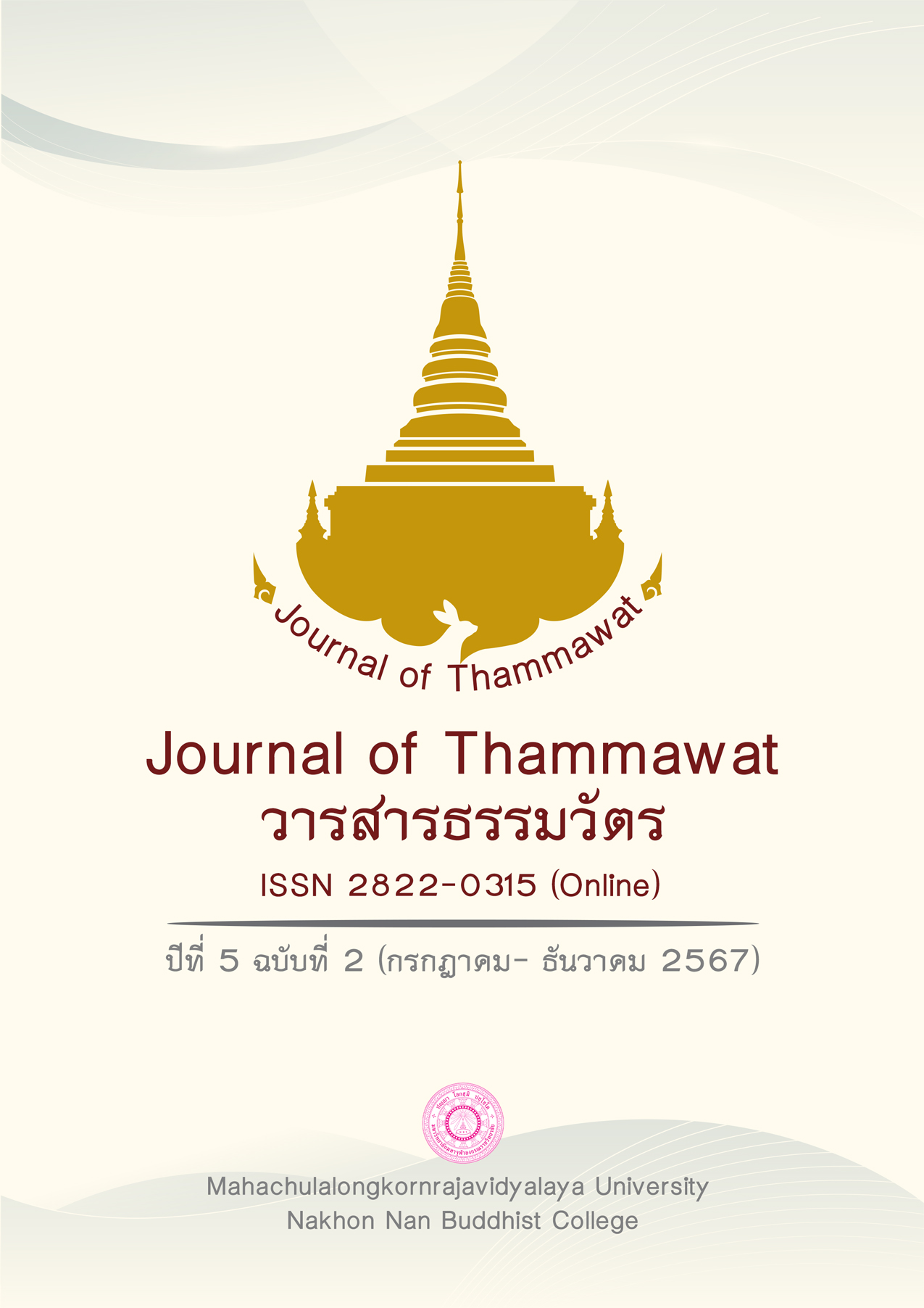Pu Chans’ Roles in Promoting Buddhist Activities Mae Charim District, Nan Province
Main Article Content
Abstract
The purpose of this article was: 1) to study the history and importances of Pu Chans, 2) to study the qualifications and roles of Pu Chans, and 3) to analyze the roles of Pu Chans in promoting Buddhist activities in Mae Charim District, Nan Province. It was qualitative research by obtaining data from documents and the field study by interviewing 25 key informants. Data were analyzed by means of content analysis.
The research revealed that: 1) Pu Chans in Mae Charim District had existed since the Buddhists settled down here. 2) Pu Chans have played important roles in performing Buddhist rituals, as coordinators between monks. They were once ordained as a monk. They must have deep respects in the Triple Gem, bearing good characters, having knowledge and understanding in the sequences of rituals, and ability to coordinate between the host and the monks. They serve as a bridge between the monastery and the villagers, and a leader in performing rituals such as the ceremonies of paying respects to the Triple Gem, requesting the five precepts, taking the five precepts, inviting to preach the Dhamma, inviting to recite the Paritta. 3) Pu Chans in promoting Buddhist activities in Mae Charim District, Nan Province, they can be grouped in 5 aspects: (1) in preserving Buddhism, They support Buddhism by practicing generosity, morality, and meditation, (2) in the propagation of Buddhism, They behave as a good and moral person, (3) in promoting religious ceremonies, They promote Buddhist activities such as making merit by giving alms to monks, reciting prayers, (4) in promoting arts and culture, They create awareness in local arts and culture for children and the public, (5) in promoting unity in the community, They observe neutrality, do not create conflicts in the community.
Article Details

This work is licensed under a Creative Commons Attribution-NonCommercial-NoDerivatives 4.0 International License.
References
กตัญญู เรือนตุ่น และ พูนชัย ปันธิยะ. (2561). การพัฒนาปู่จ๋ารย์กับการสื่อธรรมในสังคมล้านนา. วารสารพุทธศิลปกรรม, 1(1), 82-96.
ชาญชัย ฤทธิร่วม และ โกมินทร์ วังอ่อน. (2565). ปู่จ๋าน: บทบาทการส่งเสริมพระพุทธศาสนาของชุมชน กรณีศึกษา ตำบลดงมะดะ อำเภอแม่ลาว จังหวัดเชียงราย. วารสารวิชาการธรรมทรรศน์, 22(2), 165-178.
พระครูภาวนาโสภิต และคณะ. (2565). นวัตกรรมเพื่อการสืบสานวัฒนธรรมประเพณีของจังหวัดลำพูน. วารสาร มจร บาฬีศึกษาพุทธโฆสปริทรรศน์, 8(3), 24-40.
พระอนุสรณ์ กิตฺติวณฺโณ. (2565). พระพุทธศาสนารากฐานภูมิปัญญาไทย. แพร่: ห้างหุ้นส่วนจำกัดเมืองแพร่การพิมพ์.
ภัทรพร สิริกาญจน. (2557). พระพุทธศาสนาในประเทศไทยเอกภาพในความหลากหลาย. กรุงเทพฯ: สำนักพิมพ์มหาวิทยาลัยธรรมศาสตร์.
รัฐธรรมนูญแห่งราชอาณาจักรไทย. (2560). ราชกิจจานุเบกษา. เล่ม 134 ตอนที่ 40 ก หน้า 4 (6 เมษายน 2560).
รัฐธรรมนูญแห่งราชอาณาจักรสยาม. (2475). ราชกิจจานุเบกษา. เล่ม 49 หน้า 534 (10 ธันวาคม 2475).
สำนักงานสถิติแห่งชาติ กระทรวงดิจิตัลเพื่อเศรษฐกิจและสังคม. (2561). สำรวจสภาวะทางสังคม วัฒนธรรม และสุขภาพจิต พ.ศ. 2561. ค้นเมื่อ 25 พฤษภาคม 2566. จาก https://www.nso.go.th/nsoweb/ storage/survey_detail/2023/20230501053015_16851.pdf
สุริยา รัตนกุล. (2555). พิธีกรรมในศาสนา ภาค 1. (พิมพ์ครั้งที่ 2). นครปฐม: สำนักพิมพ์มหาวิทยาลัยมหิดล.


